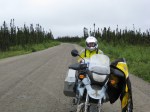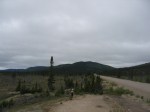- About Ride2ADV
- Adventure Rides
- Ride2ADV’s Planet Ramble
- Tiny Swoopy Roads, Amazing Views and Wooly Coos (Part 27)
- We Discover the SAS (Special Air Services) and Visit the Scottish Highlands (Part 26)
- Scotch Whiskey, Castle Dungeons and Royal Yachts, Oh My! (Part 25)
- Dim Castles, A British Military Tattoo, Strong People, Centaurs And Lots Of Scotch Whiskey (Part 24)
- Barging Onto A Barge, Ferry Nightlife And A Rainy Castle Ride (Part 23)
- Ferries, Ducati Bike Service, Chili Beer And Viking Container Ships (Part 22)
- Two Men Screaming, Deep Thoughts and Blowing Bubbles At The Palace (Part 21)
- Viking Ships, Well Preserved People, & Light Rail Vehicles (Part 20)
- A Centuries Old Sunken Warship, Ikea And Country Music (Part 19)
- Ancient Fortress Walls, Spicy Monks, 80 Year Old Women Riders And An Old Towne Faire (Part 18)
- Penthouses, Blacksmiths and Ocean Sunsets (Part 17)
- Pickle Pizza, Apes, Pyromania And New Found Friends (Part 16)
- Polish Ducatisti Hospitality, Road Runners, Wooden Menus And Leaving Lithuania (Part 15)
- Gate Crashing, Eating Royal Soup, Finding Dr. Seuss’s Secret Home And A Big White Angry Dog (Part 14)
- We Encounter Mechanical Glitches, Black Bison, Slovakian Harley Heaven And Get Free Harley Fuel (Part 13)
- 500 Year Old Grapevines, A Lost Phone and Sweltering Heat (Part 12)
- More Mountains, Rotary Motorcycles, Roman Ruins And Party In Town (Part 11)
- Broiling Temperatures, Pizza With A Sex Drive And Thunder In The Dolomites (Part 10)
- We Come Down Off The Mountain, Ride with Grimsel, And Dine With Fish (Part 9)
- We Walk The Royal Walk And Plummet Down A Mountain On Wheels (Part 8)
- We Find A Wine Cellar, A Beer Brewery, A Bobber and Mountain Cliffs (Part 7)
- Hanging Out With The Messenger of the Gods in Mercurey, France (Part 6)
- Deeper Into France We Ride, Thunderstorms, Ancient Villages, Wine And Road Construction (Part 5)
- We Attend Class At The Historic Le Mans Circuit Lesarth (24 Hours Of Le Mans) And Hang Out With Chickens (Part 4)
- An Emotional Day In Normandy (Part 3)
- Riding to Montreal, Shipping The Bikes and Landing In London (Part 2)
- Ride2ADV Starts Phase 2 Of Our World Ramble (Part 1)
- Iceland, Land of Fire, Water and Ice
- The Finish Line Is Just The Start – The Shakedown Cruise
- Alaska – Gravel, Grandeur & Goofy Grins
- Alaska – Gravel, Grandeur & Goofy Grins (Final Chapter)
- Alaska – Gravel, Grandeur & Goofy Grins (Part 10)
- Alaska – Gravel, Grandeur & Goofy Grins (Part 9)
- Alaska – Gravel, Grandeur & Goofy Grins (Part 8)
- Alaska – Gravel, Grandeur & Goofy Grins (Part 7)
- Alaska – Gravel, Grandeur & Goofy Grins (Part 6)
- Alaska – Gravel, Grandeur & Goofy Grins (Part 5)
- Alaska – Gravel, Grandeur & Goofy Grins (Part 4)
- Alaska – Gravel, Grandeur & Goofy Grins (Part 3)
- Alaska – Gravel, Grandeur & Goofy Grins (Part 2)
- Alaska – Gravel, Grandeur & Goofy Grins (Part 1)
- Trans Labrador Highway & Canadian Atlantic Provinces
- Transiting The Trans Labrador Highway & Canadian Atlantic Provinces – Final Chapter
- Transiting The Trans Labrador Highway & Canadian Atlantic Provinces (Part 8)
- Transiting The Trans Labrador Highway & Canadian Atlantic Provinces (Part 7)
- Transiting The Trans Labrador Highway & Canadian Atlantic Provinces (Part 6)
- Transiting The Trans Labrador Highway & Canadian Atlantic Provinces (Part 5)
- Transiting The Trans Labrador Highway & Canadian Atlantic Provinces (Part 4)
- Transiting The Trans Labrador Highway & Canadian Atlantic Provinces (Part 3)
- Transiting The Trans Labrador Highway & Canadian Atlantic Provinces (Part 2)
- Transiting The Trans Labrador Highway & Canadian Atlantic Provinces (Part 1)
- Ride To The End Of The Earth
- Ride To The End Of The World – Fin del Mundo Final Chapter (Part 16)
- Ride To The End Of The World – Fin del Mundo (Part 15)
- Ride To The End Of The World – Fin del Mundo (Part 14)
- Ride To The End Of The World – Fin del Mundo (Part 13) Video Shots
- Ride To The End Of The World – Fin del Mundo (Part 12)
- Ride To The End Of The World – Fin del Mundo (Part 11)
- Ride To The End Of The World – Fin del Mundo (Part 10)
- Ride To The End Of The World – Fin del Mundo (Part 9)
- Ride To The End Of The World – Fin del Mundo (Part 8)
- Ride To The End Of The World – Fin del Mundo (Part 7)
- Ride To The End Of The World – Fin del Mundo (Part 6)
- Ride To The End Of The World – Fin del Mundo (Part 5)
- Ride To The End Of The World – Fin del Mundo (Part 4)
- Ride To The End Of The World – Fin del Mundo (Part 3)
- Ride To The End Of The World – Fin del Mundo (Part 2)
- Ride To The End Of The World – Fin del Mundo (Part 1)
- Traversing The TAT (Trans-America Trail)
- Traversing The TAT (Trans-America Trail) Chapter 10 – Final Chapter
- Traversing The TAT (Trans-America Trail) Chapter 9
- Traversing The TAT (Trans-America Trail) Chapter 8
- Traversing The TAT (Trans-America Trail) Chapter 7
- Traversing The TAT (Trans-America Trail) Chapter 6
- Traversing The TAT (Trans-America Trail) Chapter 5
- Traversing The TAT (Trans-America Trail) Chapter 4
- Traversing The TAT (Trans-America Trail) Chapter 3
- Traversing The TAT (Trans-America Trail) Chapter 2
- Traversing The TAT (Trans-America Trail) Chapter 1
- Twins Wander Europe “Where to Now?”
- Ride2ADV Twins Wander Europe, Where to Now? Chapter 22 – Final Chapter
- Ride2ADV Twins Wander Europe, Where to Now? Chapter 21
- Ride2ADV Twins Wander Europe, Where to Now? Chapter 20
- Ride2ADV Twins Wander Europe, Where to Now? Chapter 19
- Ride2ADV Twins Wander Europe, Where to Now? Chapter 18
- Ride2ADV Twins Wander Europe, Where to Now? Chapter 17
- Ride2ADV Twins Wander Europe, Where to Now? Chapter 16
- Ride2ADV Twins Wander Europe, Where to Now? Chapter 15
- Ride2ADV Twins Wander Europe, Where to Now? Chapter 14
- Ride2ADV Twins Wander Europe, Where to Now? Chapter 13
- Ride2ADV Twins Wander Europe, Where to Now? Chapter 12
- Ride2ADV Twins Wander Europe, Where to Now? Chapter 11
- Ride2ADV Twins Wander Europe, Where to Now? Chapter 10
- Ride2ADV Twins Wander Europe, Where to Now? Chapter 9
- Ride2ADV Twins Wander Europe, Where to Now? Chapter 8
- Ride2ADV Twins Wander Europe, Where to Now? Chapter 7
- Ride2ADV Twins Wander Europe, Where to Now? Chapter 6
- Ride2ADV Twins Wander Europe, Where to Now? Chapter 5
- Ride2ADV Twins Wander Europe, Where to Now? Chapter 4
- Ride2ADV Twins Wander Europe, Where to Now? Chapter 3
- Ride2ADV Twins Wander Europe, Where to Now? Chapter 2
- Ride2ADV Twins Wander Europe, Where to Now? Chapter 1
- Ride2ADV’s Planet Ramble
- Cool Stuff
- Equipment Reviews
- Initial Review Thor Phase Jacket – A Trip Up And Down The Mountain
- ZipTy Racing Adventure Enduro Footpeg Extension Kit for KTM
- Aerostich Roadcrafter Comparison – Standard Roadcrafter vs. Lightweight Roadcrafter Suits
- SENA SMH-10 Bluetooth Motorcycle Communicator Eval
- Aerostich Roadcrafter 1 Piece Suit Long Term Test Ride
- GeigerRig Hydration Systems
- Sidi Adventure Goretex Boots
- Sidi Canyon Gortex Boots
- Arai XD4 vs XD3 Helmet
- Bike News
- Video Adventures
- Motorcycle Awareness – We’re people too.
- “Aren’t you afraid to die?”
- Why Do We Keep Living?
- Deus Ex Machina I Jack Churchill
- Iceland Video Ride
- One Lane Tunnel to Siglufjordur, Iceland
- Trans American Trail (TAT) Fesh Fesh Riding
- Trans Labrador Highway Exploring
- Alaska & Canadian Yukon
- Ride To The End Of The Earth – Torres Del Paine, Chile
- From The Pegs
- I Stole Your Stuff, You Should Thank Me!
- If You Love Adventure Riding, Pay Attention!
- Motorcyclists: Our Differences Bind Us Together
- Ride2ADV Is Published in RoadRUNNER Motorcycle Touring & Travel Magazine
- The Pen Is Mightier Than the Sword?
- SHARP Dressed Man
- Bait And Switch?
- Why We Ride
- Does Your Choice Of Motorcycle Helmet Say Something About You?
- Big, Medium or Little? What To Do, What To Do?
- Experiences Never Die
- Because It’s There!
- Can You Have An Adventure On A “Guided” Motorcycle Tour?
- I’m “Over” Adventure
- Stuff I’ve Learnt from Motorcycles
- Over The River And Through The Woods To Adventure Ride We Go
- Shrinking and Sharing The Planet Through Adventure Travel
- Stuff You “Need”; Or Should That Be Stuff You “Gotta Have”?
- Priorities, priorities, priorities…
- Forced Marriages – Do they work?
- Motorcyclists – Who Are Those People And Why Should They Share?
- Signs Of A Great Ride
- I’m Going To Stop To Take A Picture (Part 1)
- You Meet The Nicest People On A…
- Sometimes Adventure Is Not Too Far Away
- When Opportunity Knocks… Slam The Door?
- Falling Off Sucks
- If It’s Tuesday, I Must Be In…
- Lucky Tester
- Shrink The Planet
- Links & Books

Recent Posts
Top Posts & Pages
 Ride2Adventure
Ride2Adventure
- Contact Ride2ADV
- Tiny Swoopy Roads, Amazing Views and Wooly Coos
- We Discover the SAS (Special Air Services) and Visit the Scottish Highlands
- Scotch Whiskey, Castle Dungeons and Royal Yachts, Oh My!
- Dim Castles, A British Military Tattoo, Strong People, Centaurs And Lots Of Scotch Whiskey
- Barging Onto A Barge, Ferry Nightlife And A Rainy Castle Ride
- Ferries, Early Morning Beer, Carte Blanche, Road Racing & Hanging With King Julien
- Ferries, Ducati Bike Service, Chili Beer And Viking Container Ships
- Two Men Screaming, Deep Thoughts and Blowing Bubbles At The Palace
- Viking Ships, Well Preserved People, & Light Rail Vehicles
Blog Stats
- 191,919 hits
Join 1,151 other subscribers
Calendar of Posts – See when something was posted.
Archives
- August 2018
- July 2018
- April 2018
- March 2018
- February 2018
- January 2018
- December 2017
- November 2017
- October 2017
- September 2017
- July 2017
- June 2017
- May 2017
- January 2017
- December 2016
- November 2016
- September 2016
- August 2016
- July 2016
- June 2016
- March 2016
- July 2015
- June 2015
- March 2015
- February 2015
- January 2015
- August 2014
- June 2014
- April 2014
- March 2014
- February 2014
- January 2014
- November 2013
- June 2013
- April 2013
- March 2013
- February 2013
- January 2013
- December 2012
- November 2012
- October 2012
- September 2012
- August 2012
- July 2012
- June 2012
- May 2012
- April 2012
- March 2012
(function(i,s,o,g,r,a,m){i['GoogleAnalyticsObject']=r;i[r]=i[r]||function(){
(i[r].q=i[r].q||[]).push(arguments)},i[r].l=1*new Date();a=s.createElement(o),
m=s.getElementsByTagName(o)[0];a.async=1;a.src=g;m.parentNode.insertBefore(a,m)
})(window,document,'script','//www.google-analytics.com/analytics.js','ga');
ga('create', 'UA-61210400-1', 'auto');
ga('send', 'pageview');
- Comment
- Reblog
-
Subscribe
Subscribed
Already have a WordPress.com account? Log in now.
%d










good thing you obeyed that traffic sign. With nobody in sight as far as the eye could see it would have been logical to disregard it .
LikeLike
April 29, 2012 at 10:43 pm